The 1928 New York Yankees
The 1928 New York Yankees
The Return of Murderers Row
Charlie Gentile
ROWMAN & LITTLEFIELD
Lanham Boulder New York Toronto Plymouth, UK
Published by Rowman & Littlefield
4501 Forbes Boulevard, Suite 200, Lanham, Maryland 20706
www.rowman.com
10 Thornbury Road, Plymouth PL6 7PP, United Kingdom
Copyright 2014 by Rowman & Littlefield
All rights reserved. No part of this book may be reproduced in any form or by any electronic or mechanical means, including information storage and retrieval systems, without written permission from the publisher, except by a reviewer who may quote passages in a review.
British Library Cataloguing in Publication Information Available
Library of Congress Cataloging-in-Publication Data
Gentile, Charlie, 1959
The 1928 New York Yankees : the return of murderers row / Charlie Gentile.
pages cm
Includes bibliographical references and index.
ISBN 978-1-4422-3598-4 (cloth : alk. paper) ISBN 978-1-4422-3599-1 (ebook) 1. New York Yankees (Baseball team)History20th century. 2. Baseball playersUnited StatesBiography. I. Title.
GV875.N4G44 2014
796.357'6409747109042dc23
2014003086
 The paper used in this publication meets the minimum requirements of American National Standard for Information SciencesPermanence of Paper for Printed Library Materials, ANSI/NISO Z39.48-1992.
The paper used in this publication meets the minimum requirements of American National Standard for Information SciencesPermanence of Paper for Printed Library Materials, ANSI/NISO Z39.48-1992.
Printed in the United States of America
This book is for my parents
A Note on Sources
G reat reliance was placed on www.baseball-reference.com for statistics on teams and players, unless where documented in the notes sections. Articles from ProQuest Historical Newspapers (American Periodicals Series Online) and Infoweb (Americas Historical Newspapers) were used as primary sources for quotes and other information from major newspapers written before and up to the late 1920s.
The specific newspapers, magazines, and journals from these two sources fully referenced in the endnotes are the Kansas City Star , Duluth News-Tribune , Hartford Courant , Morning Oregonian , Pawtucket Times , Chicago Daily Tribune , Fort Worth Star-Telegram , New York Times , New York Herald-Tribune , Baltimore Sun , Atlanta Constitution , Boston Daily Globe , Washington Post , Los Angeles Times , Bankers Magazine , and Wall Street Journal .
Information from other newspapers, magazines, and journals was gathered from microfiche, books, and interlibrary loan, mainly from the New York Public Library. Sources include the following, which are fully referenced in the endnotes: New York Evening Post , New York Telegram , New York Morning Telegraph , Philadelphia Inquirer , Philadelphia Public Record , Philadelphia Public Ledge r, St. Louis Post-Dispatch , Cleveland Plain Dealer , Detroit Free Press , Sporting News , Baseball Magazine , San Francisco Chronicle , Oakland Tribune , Literary Digest , Colliers , and Nations Business .
Weekday coverage of sports in the sports sections for most of the major newspapers ran, on average, three to four pages. Each paper had regular columns, with some devoted strictly to baseball and others to all things sport. The New York Evening Post featured Cutting the Plate with Fred Lieb, a daily baseball column by Fred Lieb, as well as the Listening Post, a regular column for other sports. Joe Williams commented on the sports world on a daily basis, and Dan Daniel on baseball, in his Daniels Dope column for the New York Telegram . George B. Underwood authored Fanning with the Fans for the New York Morning Telegraph . John Kieran and James R. Harrison penned the Sports of the Times column for the New York Times . James Isaminger wrote Tips from the Sport Ticker for the Philadelphia Inquirer , which also featured sports commentary in Old Sports Musings. Ed Pollack authored Playing the Game for the Philadelphia Public Ledger . Three and Two by Bill Dooley, Is Zat So by Gordon Mackay, as well as a sports editorial, were regular columns in the Philadelphia Public Record . Albert Keane penned Calling em Right for the Hartford Courant . The Boston Daily Globe , Cleveland Plain Dealer , Washington Post , Chicago Daily Tribune , and Los Angeles Times all had similar columns.
When it came to daily reporting on game action, Richards Vidmer and James R. Harrison covered the Yankees and Giants for the New York Times ; Hugh Bradley, Frederick G. Lieb, and Homer Thorne for the New York Evening Post ; and Rud Rennie for the New York Herald-Tribune . James Isaminger covered the Athletics for the Philadelphia Inquirer , Bill Brandt for the Philadelphia Public Ledger , and Bill Dooley and Joe Dugan for the Philadelphia Public Record .
References to books are found in the bibliography and fully cited in the endnotes.
Preface
N ot quite fifty years after the fact, The Greatest of All: The 1927 Yankees , by John Mosedale, was published in 1974. The author states in his introduction that, Surprisingly, not much has been written about the most dominant team in the history of professional sport. There are little more than a half dozen entries in the New York Public Library files. But one paragraph later, Mosedale writes, This paucity seems about to be remedied, and books about the Yankees, in W. H. Audens phrase, may soon rain on our defenseless heads. Around the same time, Where Have You Gone, Joe DiMaggio? , by Maury Allen, and Dynasty: The New York Yankees, 19491964 , by Peter Golenbock, were published. Both works, along with Mosedales, were noncontroversial celebrations of sports most dominant team.
The Yankees had been AWOL since 1965, but they were just beginning to crawl back onto the baseball scene after a group headed by George Steinbrenner bought a controlling interest in 1973. The team was playing in a blighted area in an old, decrepit stadium and had been losing badly in the popularity contest with the New York Mets.
With the relaxation of the reserve rule and the onset of free agency in 1976, the tone was set. The Yankees were going to spend money to remain at or near the top. Efforts paid off with a championship in 1977, bringing about Steve Jacobsons The Best Team Money Could Buy (1978). The book focuses on the high-profile free agent signing of Reggie Jackson. The subtitle, The Turmoil and Triumph of the 1977 New York Yankees , and a look at the table of contents, introduces a soon-to-be recurring theme. After another championship in 1978, there was The Bronx Zoo (1979), by Sparky Lyle and Peter Golenbock. Enough said.
This latest success by the Yankees was coming off the heels of the tumultuous, but successful, five-year run of the Oakland Athletics and their eccentric owner Charlie Finley. While winning three consecutive World Series and five straight division titles, they were one of the most colorful teams in the games history at a time when baseball was in the midst of trying to reverse a long-term trend of losing popularity to the other three major team sports.
They were once, of course, the Philadelphia Athletics, and between that, from 1955 to 1967, they were the Kansas City Athletics, where Finley eventually gained control. There he ended the clubs questionable deals with the Yankees, no longer acting as a farm club or allowing them to co-opt his promising young players. The Yankees, however, sought many, if not all, of Oaklands stars, still in their prime during Finleys later fire sales.
So, it was an accurate forecast. Books having the New York Yankees as their theme number well into the hundreds, if not more. The most dominant team in the history of professional sport is today, undoubtedly, the most written about and most dominant on sports bookshelves. Certain topics seem inexhaustible. It was written by one historian of the Civil War that it could possibly take decades to sift through the available material just to write about one state alone. The New York Yankees dont quite go to that extreme, but there is a history of more than one hundred years, not necessarily one of unbroken success, within which there is still an ample supply of interesting subthemes to pick from among the more prominent.
Next page
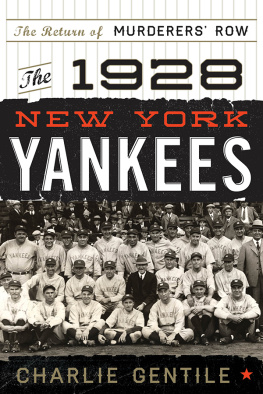

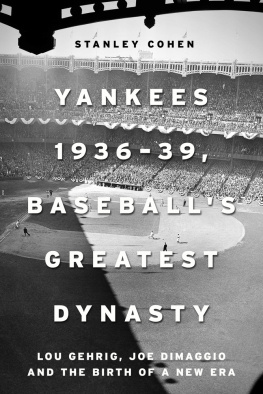
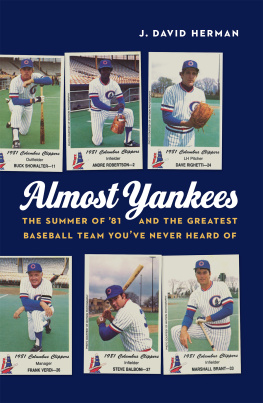
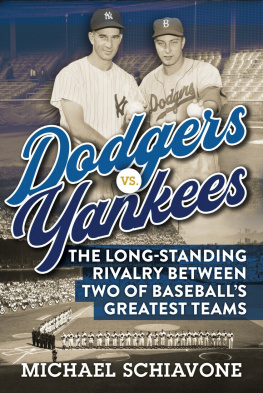
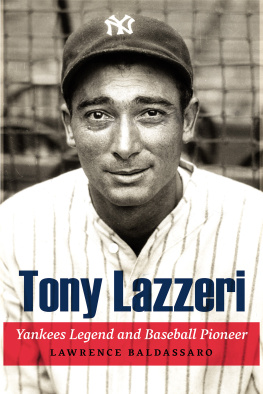
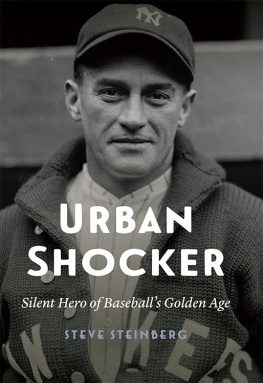
 The paper used in this publication meets the minimum requirements of American National Standard for Information SciencesPermanence of Paper for Printed Library Materials, ANSI/NISO Z39.48-1992.
The paper used in this publication meets the minimum requirements of American National Standard for Information SciencesPermanence of Paper for Printed Library Materials, ANSI/NISO Z39.48-1992.